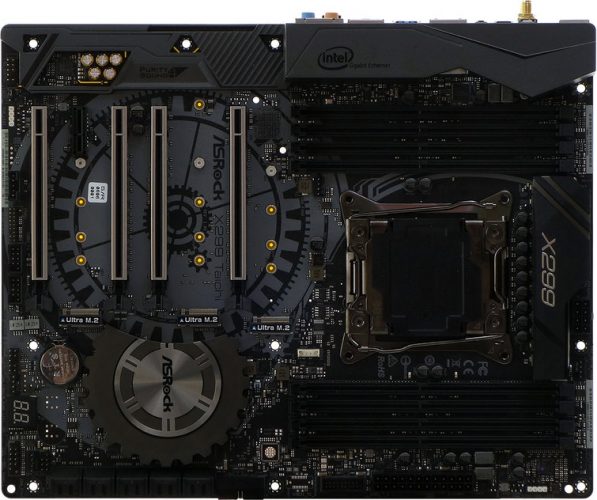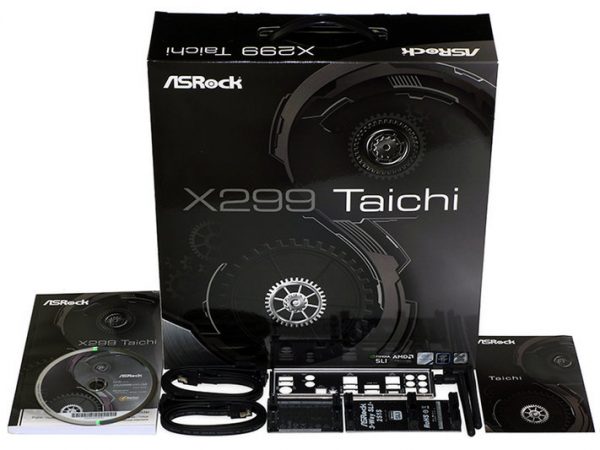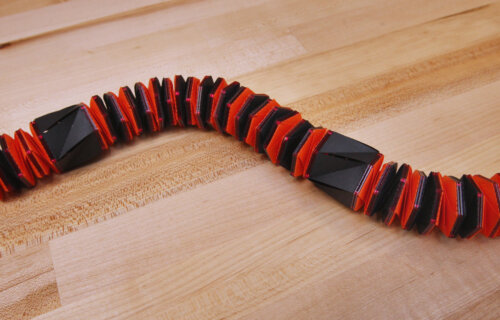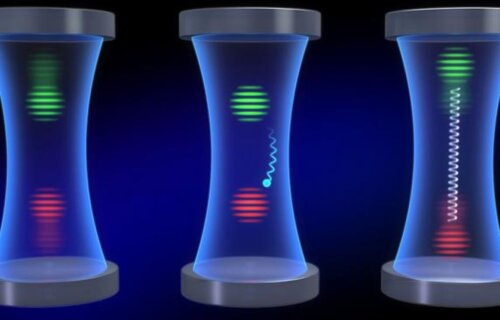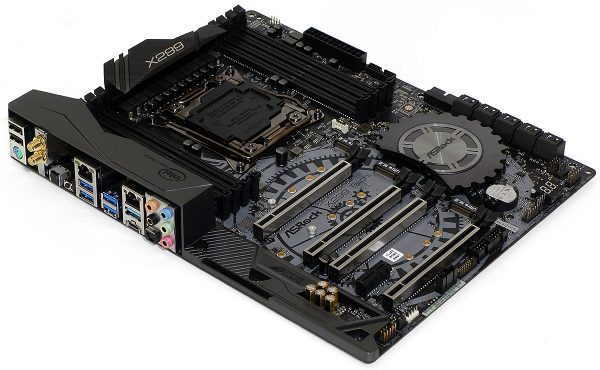
The launch of Intel’s X299 platform hasn’t been smooth. Motherboard manufacturers were receiving important core firmware updates even up to the day of the launch. The two boards we used in our launch-day reviews were at least stable, but we still had to go back and retest them before running the new results against today’s test subject, ASRock’s X299 Taichi. Let’s see what progress has been made in three weeks.
The first thing we noticed on the X299 Taichi spec sheet was this motherboard’s paucity of resource sharing. SATA-based M.2 drives still steal SATA ports, but interest in those has quickly diminished in the age of NVMe. A closer look reveals that the X299 Taichi has one more M.2 slot than its competitors, and it comes with a stealthy share: Fed by the CPU’s PCIe controller, a PCIe-based (e.g. NVMe) drive will force the graphics card slots into x8/x0/x4/x0 mode when installed alongside a 16-lane (Kaby Lake-X) processor. On the plus side, the Taichi is also the first X299 motherboard we’ve tested that bypasses the bandwidth sharing problem of the chipset’s DMI by directly linking an M.2 slot to the CPU.
Like the two previously-tested X299 models, ASRock’s Taichi has two 10Gb/s USB 3.1 ports on the back (one with a Type-C interface), CLR_CMOS and firmware flashing buttons, and cable connectors for a Wi-Fi controller. Matching the Asus configuration, the dual Gigabit Ethernet ports of ASRock’s X299 Taichi edge ahead of the single port provided on our MSI sample. Unfortunately, ASRock’s chosen 433 Mb/s Wi-Fi controller has the least rated bandwidth of the three samples we’ve reviewed.
Every X299 motherboard we’ve seen was designed to manage the weirdness of Intel’s adding a CPU with 16-lane PCIe controller (we’re talking about Kaby Lake-X) to a platform designed to benefit from the added pathways of 44-lane and 28-lane processor-based controllers. The 28-lane option makes sense because it allows 3-way SLI (where the minimum allowed is eight lanes per card) while leaving four lanes for a PCIe-based storage controller. We’ve already detailed how ASRock maintained that storage focus by feeding its first M.2 slot with CPU lanes, but it’s also important to remember that this configuration excludes 2-way SLI from running on those same 16-lane processors.
Conversely, Asus’ X299 Prime excluded the 3-way SLI option when using 28-lane processors, and didn’t even include CPU-based M.2. While Kaby Lake-X owners may question why ASRock didn’t add even more PCIe switches to allow the option of disabling the first M.2 slot while retaining basic SLI compatibility, a better question might be why anyone would spend the extra $100 to put Kaby Lake on X299, rather than stick with Z270.
Basic CrossFire and SLI compatibility is handled by the first and third metal-reinforced slots, providing two empty slots between cards to allow the use of oversized graphics card coolers. While ASRock claims that CrossFire isn’t possible with 16-lane processors, we’ve never seen AMD exclude an x8/x4 configuration for two cards.
The X299 Taichi supports two RGB strips at its upper front and rearward bottom edges, two USB 3.0 front-panel cables at its front edge, two USB 2.0 front-panel cables at its bottom edge, four 4-pin fans along its bottom and top edges, a fifth 4-pin fan between the CPU socket and upper PCIe slot, a VROC (RAID for PCIe storage) module between its upper M.2 connector and nearby DIMMs, a Thunderbolt Add-in card, and 10 SATA drives. All 10 SATA ports point forward to keep connectors under the forward edge of long expansion cards, as does the second USB 3.0 header above them. Users also have access to a two-digit POST code display, but the dual BIOS ICs are not manually selectable. Builders who love cases with poorly-specified front-panel cables will probably hate the X299 Taichi, as there are always a few cases on the market with FP-Audio cables that are too short to reach this motherboard’s traditional bottom-rear-corner header position.
Two empty BGA pads appear to be for a 10GbE controller and front-panel USB 3.1 connector, the later guess bolstered by the missing Type-C lead located between the two USB 3.0 front-panel headers. We can’t wait to see the more advanced motherboard that will be based on this circuit board!
We no longer expect to see a large cable bundle on high-end motherboards, now that M.2 drives have taken over primary storage duty. ASRock includes four SATA cables for your storage drives, along with an HB-style SLI bridge, a 3-way SLI bridge, two Wi-Fi antennas, an I/O shield, drivers, and documentation.





